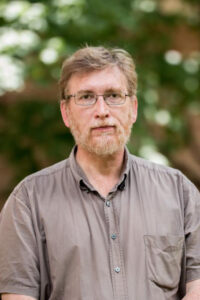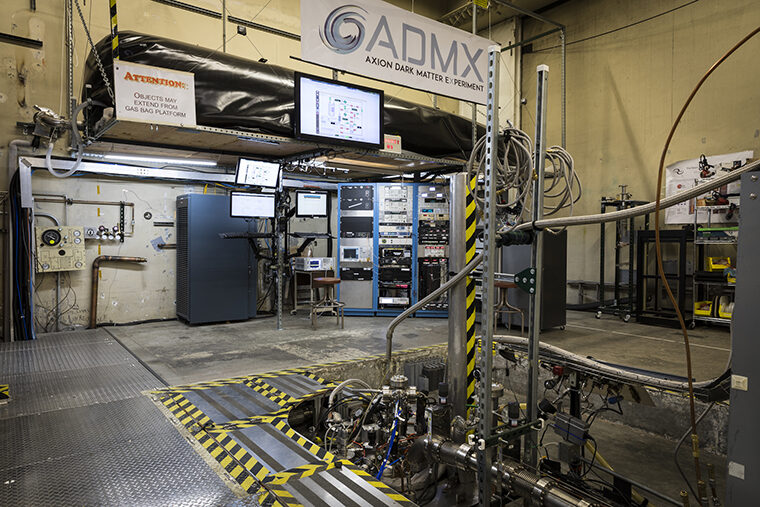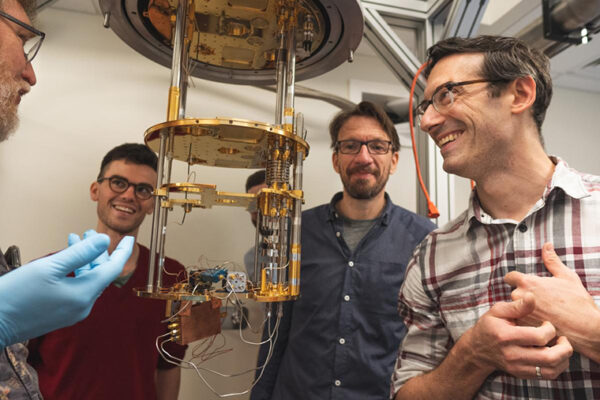The Department of Energy (DOE) has awarded new funding to boost research on dark matter, the mysterious substance that makes up an astounding 85% of the matter in the universe.

One theory suggests that dark matter is made of axions: very light, invisible particles streaming through the cosmos. Physicists from Washington University in St. Louis are part of a collaborative research team searching for these dark matter particles with mass less than the mass of a proton.
“Our part of the project is to use a novel property of superconducting quantum-limited detectors known as JPAs to ‘squeeze the vacuum’ in a multi-cavity axion detector,” said James H. Buckley, professor of physics in Arts & Sciences.
“Using this trick — essentially playing with the uncertainty principle — we can suppress the quantum noise to make more sensitive measurements of the incredibly weak axion signals,” he said.
The Axion Dark Matter eXperiment (ADMX) is led by the Fermi National Accelerator Laboratory and hosted at the University of Washington in Seattle. Buckley is co-principal investigator for the Washington University portion of the effort, along with Kater Murch, associate professor of physics. Erik Henriksen, assistant professor of physics, is also a collaborator.
Over the past 90 years, scientists have found increasing evidence for dark matter, first in the motion of stars and galaxies and more recently in the pattern of temperature fluctuations from the universe’s earliest moments, still seen today. While evidence for dark matter is strong, the nature of dark matter has remained a mystery.
Read more about the DOE’s grants for Basic Research Needs for Dark Matter New Initiatives on the DOE website or the Fermilab newsroom.



